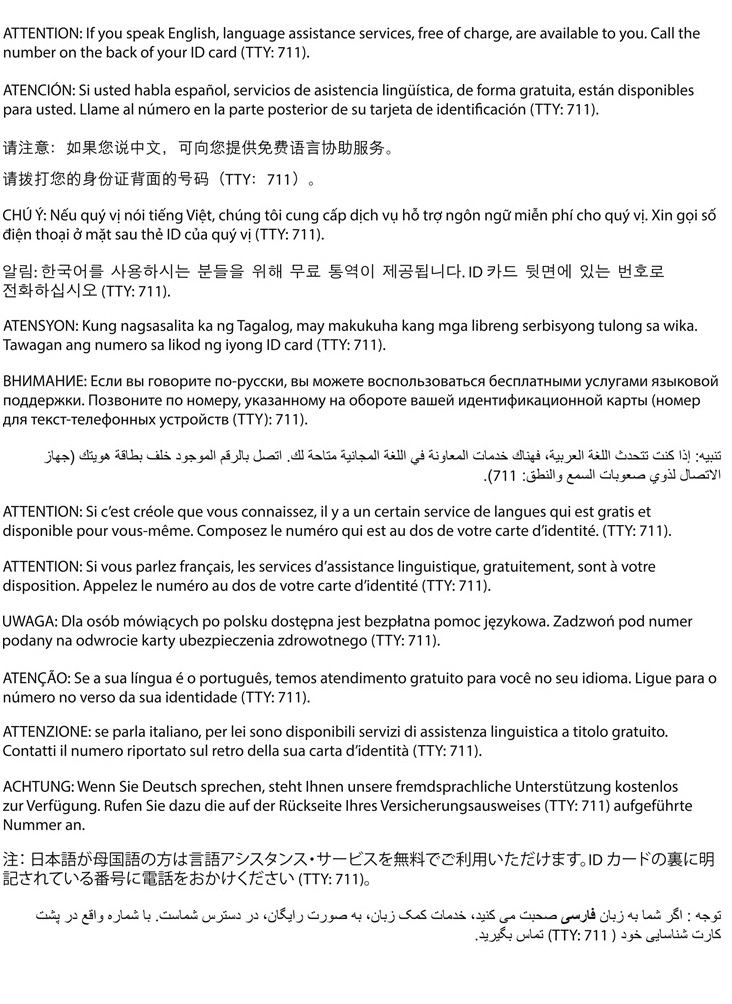| Highmark Commercial Medical Policy - Pennsylvania |
| Medical Policy: | I-123-005 |
| Topic: | Fulvestrant (Faslodex) |
| Section: | Injections |
| Effective Date: | April 30, 2018 |
| Issue Date: | April 30, 2018 |
| Last Reviewed: | April 2018 |
|
This policy is designed to address medical guidelines that are appropriate for the majority of individuals with a particular disease, illness, or condition. Each person's unique clinical circumstances may warrant individual consideration, based on review of applicable medical records.
| Policy Position Coverage is subject to the specific terms of the member’s benefit plan. |
Fulvestrant (Faslodex) may be considered medically necessary for ANY ONE of the follow indications:
Breast Cancer
· When used as treatment for HR-positive, human epidermal growth receptor-2 negative (HER2-negative) advanced disease in postmenopausal women not previous treated with endocrine therapy; or
· When used as treatment for HR-positive advanced disease in postmenopausal women with disease progression following endocrine therapy; or
· When used as treatment for HR-positive, HER2-negative advanced or metastatic breast cancer in women with disease progression after endocrine therapy, in combination with ANY ONE of the following:
o Palbociclib (Ibrance); or
o Abemaciclib (Verzenio)
· Therapy as a single agent for postmenopausal women* or for premenopausal women treated with ovarian ablation/suppression who have recurrent or stage IV HR-positive non-visceral or asymptomatic visceral disease characterized as (preferred**):
o HER2-negative disease; or
o HER2-positive disease
· Therapy for recurrent or stage IV HR-positive non-visceral or asymptomatic visceral disease in combination with everolimus for HER2-negative disease in postmenopausal women* who have had prior endocrine therapy within one (1) year or for premenopausal women treated with ovarian ablation/suppression who have had prior endocrine therapy within one (1) year (preferred**); or
· When used in combination with trastuzumab (Herceptin) for the treatment of recurrent or stage IV HR-positive, HER2-positive non-visceral or asymptomatic visceral disease in postmenopausal women* or premenopausal women treated with ovarian ablation/suppression; or
· For the treatment of recurrent or metastatic HR-positive, HER2-negative disease that has progressed on or after prior adjuvant or metastatic endocrine therapy for postmenopausal women* or premenopausal women receiving ovarian suppression with an LHRH agonist, in combination with ANY ONE of the following (preferred**):
o Palbociclib (Ibrance); or
o Abemaciclib (Verzenio)
Endometrial Carcinoma
· When used as primary treatment as single-agent hormone therapy for grade one (1) or two (2) endometrioid histologies, preferably in individuals with small tumor volume or an indolent growth pace
o May be considered for select individuals with disease limited to the uterus that is not suitable for primary surgery; or
o With or without sequential external beam radiation therapy (EBRT) and brachytherapy for diseases not suitable for primary surgery in individuals with suspected or gross cervical involvement; or
o With or without sequential EBRT and with or without brachytherapy for extrauterine pelvic disease; or
o With or without systemic therapy and/or EBRT for distant visceral metastases, or
· As adjuvant treatment for surgically staged individuals as single-agent hormone therapy for grade one (1) or two (2) endometrioid histologies, preferably in individuals with small tumor volume or an indolent growth pace
o With sequential EBRT with or without brachytherapy for stage III disease; or
o With or without EBRT and vaginal brachytherapy for stage IV disease, or
· When used as hormone therapy for grade one (1) or two (2) endometrioid histologies, preferably in individuals with small tumor volume or an indolent growth pace
o May be considered for isolated metastases; or
o For disseminated metastases; or
o With sequential EBRT with or without brachytherapy for local/regional recurrence in individuals with disease confined to the vagina or in pelvic lymph nodes; or
o With sequential EBRT for local/regional recurrence in individuals with disease in para-aortic or common iliac lymph nodes; or
o With or without sequential tumor-directed EBRT for local-regional recurrence in individuals with microscopic residual upper abdominal or peritoneal disease; or
o With or without sequential palliative EBRT for local/regional recurrence in individuals who have received prior EBRT to site of recurrence.
*Men with breast cancer should be treated in a similar manner as postmenopausal women.
The use of an aromatase inhibitor is ineffective without simultaneous suppression of testicular steroidogenesis.
The use of Fulvestrant for any other indication is considered not medically necessary.
Dosage recommendations per the FDA label. **Note: Language derived from National Comprehensive Cancer Network (NCCN) guidelines. |
| Place of Service: Outpatient |
The administration of Fulvestrant (Faslodex) is typically an outpatient procedure which is only eligible for coverage as an inpatient procedure in special circumstances, including, but not limited to, the presence of a co-morbid condition that would require monitoring in a more controlled environment such as the inpatient setting.
| The policy position applies to all commercial lines of business |
| Denial Statements |
Services that do not meet the criteria of this policy will not be considered medically necessary. A network provider cannot bill the member for the denied service unless: (a) the provider has given advance written notice, informing the member that the service may be deemed not medically necessary; (b) the member is provided with an estimate of the cost; and (c) the member agrees in writing to assume financial responsibility in advance of receiving the service. The signed agreement must be maintained in the provider’s records.
| Links |
07/2017, Coverage Criteria Revised for Fulvestrant (Faslodex)
05/2018, Coverage Guidelines Revised for Fulvestrant (Faslodex)
